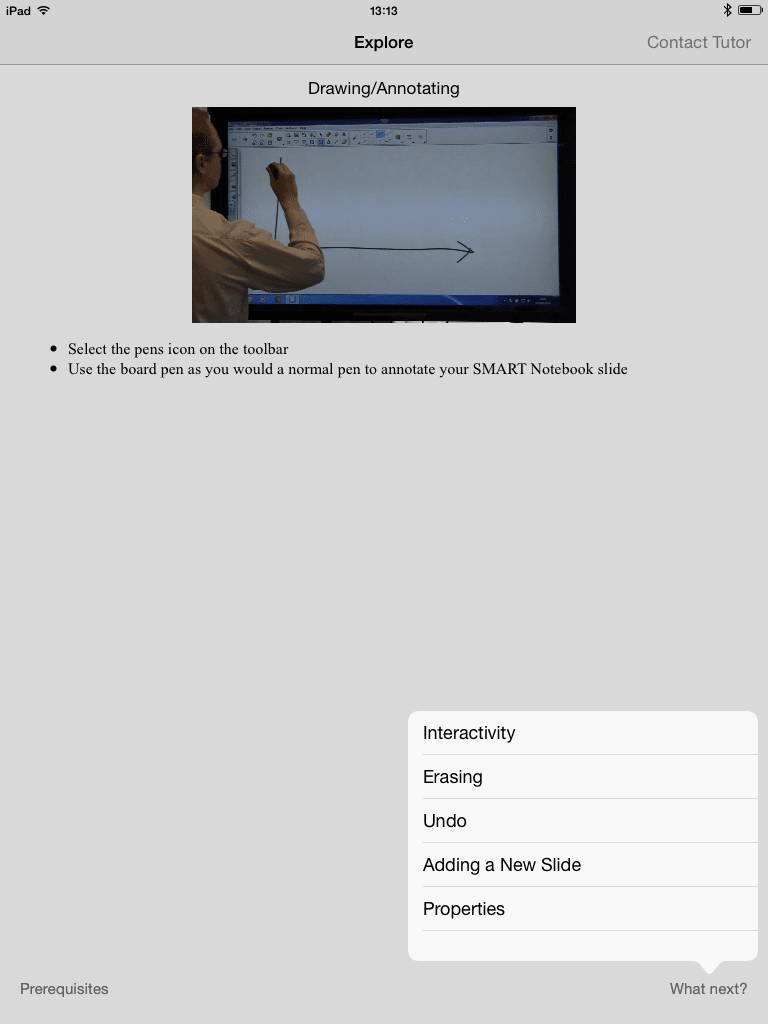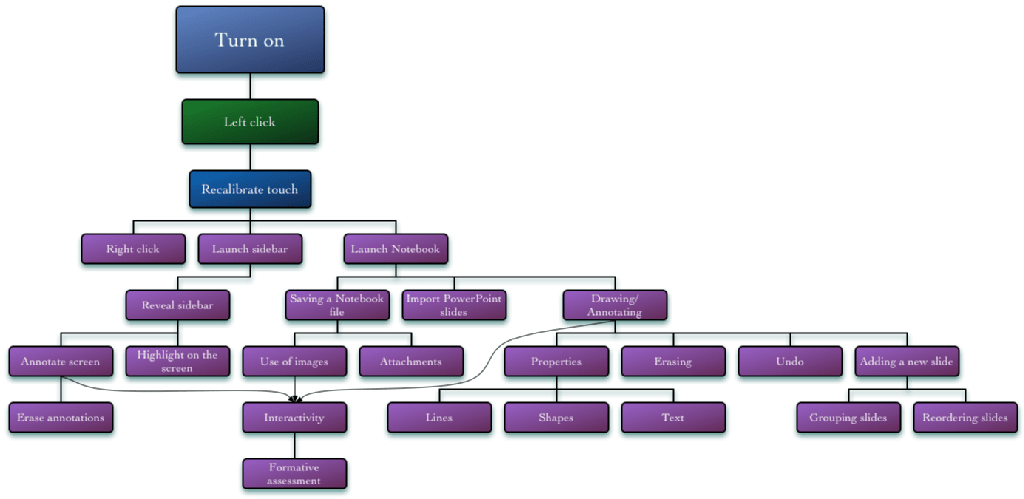Postgraduate Award Technology Enhanced Learning: What I've learnt
Originally written in 2014. Edited for the web from a presentation.
A Paradox
Demand for appointments to be trained on SMART Boards has remained low.
This is despite a large demand for training expressed by the community.
Why could this be?
- Poor publicity?
-
Delivery method burdensome?
- Need to pre-book
- Need to travel
- Need to overcome pride
There is also a problem: When sessions are booked, Teaching Grid Advisers often have to refresh their own knowledge to prepare for the appointment as time has passed since the last.
A Paradox
A problem
Can technology help solve the paradox and fix the problem?
Aims of the project
Increased teacher awareness of how SMART Boards can be effectively used for learning.
Increased confidence of Teaching Grid Advisers in delivering SMART Board training.
How will I know I've met my aims?
- More teachers receiving training on SMART Boards.
- Teaching Grid Advisers spending less time preparing for SMART Board training sessions.
The method
Modified version of Kirkpatrick's approach to learning activity design and evaluation
Goals (Planning)
Desired result
What is the organisational objective?
⌄
Desired performance
What must the learner be able to do to achieve the desired result?
⌄
Desired learning
What new knowledge and skills does the learner need for the desired performance?
⌄
Desired motivation
What must the learner perceive in order to learn the desired learning?
⌄
Evaluation
Actual motivation
Did they have the desired motivation?
⌄
Actual learning
Did they learn the desired skills and knowledge?
⌄
Actual performance
Did the learner transfer their learning into practice for the desired performance?
⌄
Actual result
Does the organisation see the desired result?
The solution
- iPad app
- Used by learners in their own context or in the Teaching Grid with a Teaching Grid Adviser training them.
- The app consists of a series of skill explanations including video examples that can be worked through in a non- linear fashion.

Skill tree
- Identified the distinct skills that make up SMART Board use in teaching.
- Analysed each of these to determine which of these skills were prerequisite to learning others.

The Evaluation
Actual motivation
Questionnaire for testers to complete after using the app
-
Struggled to discern the user interface of the app.
- Divide between those who had used similar interfaces in other iPad apps and those who had not.
- Most felt the app was beneficial to them but not everyone did.
- Most felt that their students would benefit from them using the app.
- Some testers knew there were things that could be done on a SMART Board that were missing from the app.
- Poor video quality
- A more goal oriented design would improve motivation.
Actual learning
Skills test immediately before and after using the app.
All testers
- Learning happened across the range of tasks from simple to complex
- Gains were small.
- Higher gains with the more complex tasks
Excluding those who scored 100% on pre-test ('power users')
- Same pattern remains
- Testers progressed noticeably, especially in the area of using SMART Boards for formative assessment.
Excluding those who scored 100% on pre-test per task
- Demonstrated dramatic gains in areas they were lacking.
- (Almost) every tester made measurable progress
- Skew towards the simpler tasks.
Conclusion
- For the learners this is aimed at, they will make significant learning gains just by using the app on their own.
- Will open up the possibility of learning in their own space, time and pace